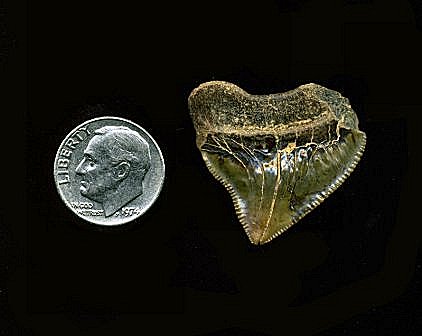|
THE SHARKS |
|
The Crow Sharks Two species of Squalicorax are commonly found in the streams of Monmouth County, S. pristondontus and S. kaupi. Of the two species S. pristondontus is the larger and more commonly found tooth. The crows are easy to identify, they are the only Cretaceous teeth found in NJ in with serrations. They are wide, flat teeth with large compressed roots. The two species look very similar. S. pristondontus is the larger of the two averaging between 3/4 and 1 1/2 inches with S. kaupi going between 1/2 to 5/8ís of an inch. S. kaupi has a distinct notch on the distal side of the crown with finer serrations than S. pristondontus. The teeth of both these species seem to hold up well to stream wear.
On the left is
S. kaupi
with the distinctive notch.
Both species of crow look flat or compressed when viewed
Posterior teeth have an elongated look.
An assortment of larger
S.
pristondontus.
A large S. pristondontus.
Squalicorax symphysial tooth. |


